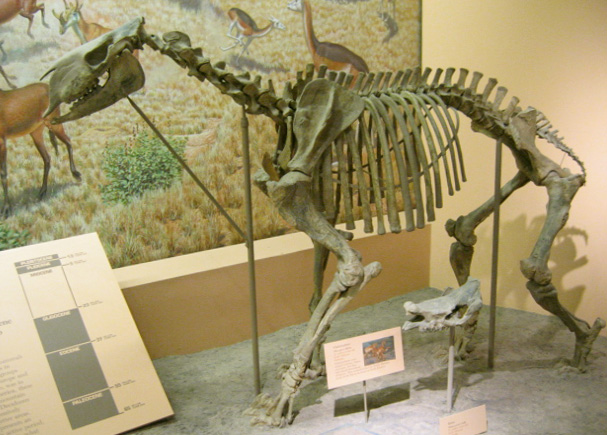#schizotheriinae

Schizotheriinae
Extinct subfamily of mammals
Schizotheriines are one of the two subfamilies of the extinct family Chalicotheriidae, a group of herbivorous odd-toed ungulate (perissodactyl) mammals that lived from the Eocene to the Pleistocene. The other clade is the Chalicotheriinae. Both clades had claws rather than hooves on their front feet, an adaptation understood as related to feeding. Schizotheriines also had claws on their hind feet. The fossils of both groups are found in environments that had trees and shrubs. While chalicotheriines developed very derived body forms, schizotheriines remained basically similar in shape to other perissodactyls such as horses and tapirs. Like most forest-dwelling ungulates, they had long necks and forelimbs longer than their hindlimbs. Schizotheriines had longer, higher-crowned cheek teeth than chalicotheriines, which indicates they typically fed on tougher vegetation. The sediments where their fossils are found show they also lived in a wider range of environments, from moist forests to drier woodland or savannah-like environments with trees. Perhaps for this reason, they became more widely distributed than chalicotheriines. Though chalicotheres likely evolved in Asia, schizotheriine fossils are also found in Africa and North America, which they reached by the Bering land bridge. The best-known schizotheriine genus is Moropus. The last survivor of the group was traditionally thought to be Nestoritherium, but it was found to actually be a member of Chalicotheriinae.
Fri 21st
Provided by Wikipedia
This keyword could refer to multiple things. Here are some suggestions: